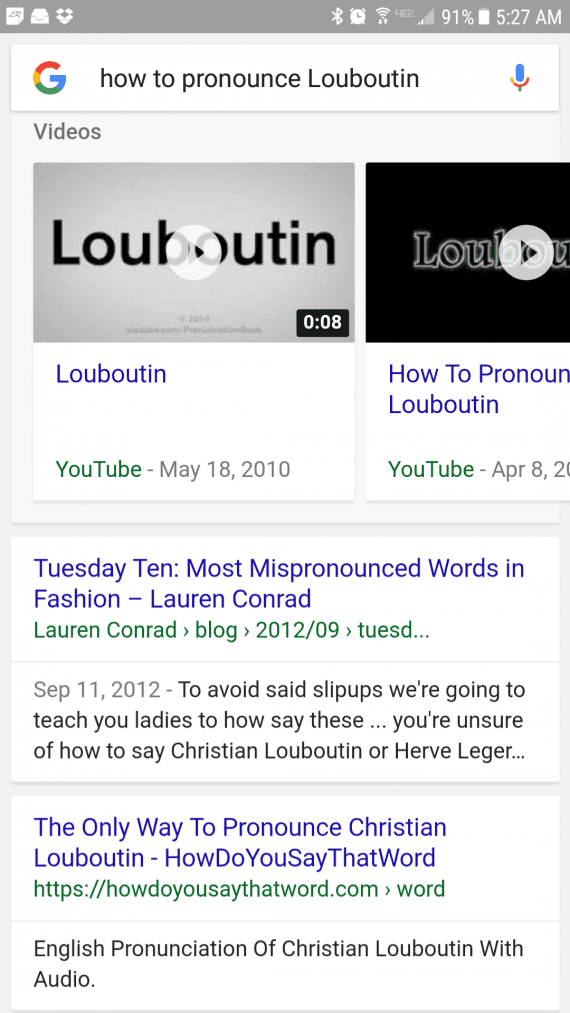Content sites may have a natural advantage in voice search. But ecommerce sites can garner visitors from voice searches, too. Follow these five steps to learn how to optimize your ecommerce site for voice search to drive more brand impressions, traffic, and sales.
Use Natural Language
Seventy percent of voice searches are natural-language searches, as I discussed in last week’s article, “SEO: Voice Search Is Here. Are You Ready?” Target questions and other phrases that real people would say when speaking to friends and family. Marketing jargon and promotional phrases are less likely to perform in voice search because searchers are less likely to speak the queries that contain them. Using the words that searchers use is always important in SEO, but it’s even more important in voice search.
To identify natural search patterns, mine keyword research for natural-reading phrases. They will typically be longer and less frequently searched than the short phrases that marketers often create content around, but they are usually less competitive and thus easier to win.
Voice searches tend to be top-of-the funnel and may not sell product immediately. However, they increase brand impressions and awareness, create goodwill, improve reputation, and build loyalty — all of which increase the likelihood of a future purchase.
Don’t Overlook Mispronunciations
More shoppers will find their way to your ecommerce site if you show them (and search engines) the connection between the product you sell pronounced correctly and the product they want to purchase pronounced incorrectly via voice search. Search engines already make the connection between the most frequent pronunciations and the product that voice searchers are looking for — brands like Adidas and Chevrolet.
Less mainstream brands have a harder time in voice search, however, and that translates to an SEO opportunity. For example, Christian Louboutin and other luxury shoe retailers miss the opportunity to educate shoppers on a key aspect of ownership: correct pronunciation of the brand name. Perhaps more affluent shoppers would purchase Louboutins if they felt comfortable speaking the brand name aloud to their friends.

Only content sites rank in Google mobile searches for the pronunciation of Louboutin.
Look for these opportunities among the products and brands you sell. Don’t optimize standard product content with misspelled words — it’s unprofessional and deteriorates consumer trust. Be creative in how you can achieve the goal of winning the mispronounced search queries in ways that are useful to searchers.
Descriptive, Textual Content
The typical category and filter pages that make up an ecommerce site are not well suited to ranking in natural-language voice searches. How-to guides, question-and-answer pages, videos with transcripts, and other descriptive content contain the types of words and phrasing that send strong relevance signals to search engines for typical voice searches.
The key is including textual content that uses the natural language phrasing that real searchers would use. Images, video, quizzes, and the like are valuable as well from a content marketing perspective, but make sure that they are accompanied by descriptive, textual content.
To identify questions and how-to needs that shoppers will be searching for, try a suggestion site, such as Answerthepublic.com, that specializes in question-based queries. Customer support is another good avenue to identify questions that real consumers have today. Answering the questions on your site that they see most frequently will also have the added benefit of potentially reducing call center volume.
Where you use natural language matters, as well. Remember that search engines are more likely to deposit searchers on the pages on which you use natural language. The content should not only answer the question, but also contain navigation to pages that sell. Don’t post your question-and-answer content or how-to guides in PDF format. They’re not only less likely to rank (even though they can be indexed), and they’re almost certainly not going to convert. Create real pages with real links and real calls to action, as appropriate, as well as navigation that joins the content to the rest of the ecommerce site.
Optimize to Win Clicks
Title tags and meta descriptions are on the to-do list in any SEO scenario. But they’re even more important in voice search. Searchers are speaking to their phone. They want to have a conversation. Talk with them. Title tags should be similar to the phrasing searchers are expected to use, and the meta description should start to add value by either beginning to answer the question or showing that the information that fulfills their search is just a sentence away. Include a call to action or an indication that the information they want is just behind the click on the search result to get to your page.
Structure and Markup
Behind the natural language and human interaction, we still need the page structure and markup that search engines use to understand the intent, emphasis, and relationships in content.
The most basic way to accomplish this is to use headings and paragraph tags to identify the major sections and supporting information in your content. If you have a how-to guide, each step should be tagged as a separate heading and the information describing the step should be in a paragraph tag immediately below the heading. If the content doesn’t lend itself to that structure, bulleted or numbered lists are preferable to a string of comma-separated phrases in sentence form.
Structured data is another way to identify content types and elements that tags important individual words and phrases with content to clarify the meaning. For example, if a site sells books, the book title could be tagged with “name” and the author’s name can be tagged with “author.” These tags aren’t visible to shoppers, but they immediately signal to search engines the relationship between those words on the page. Learn more about structured data markup at Schema.org.
